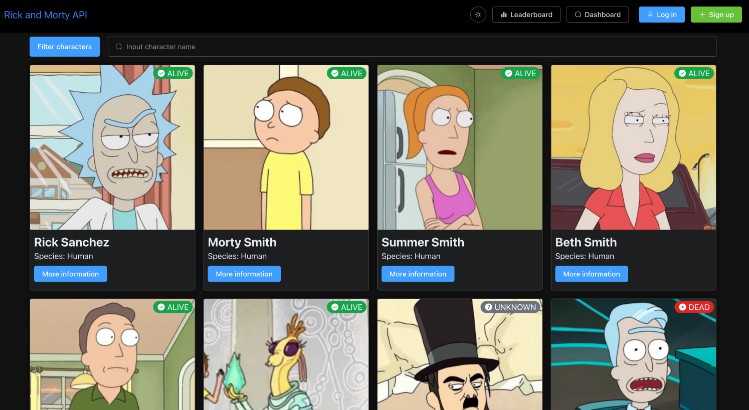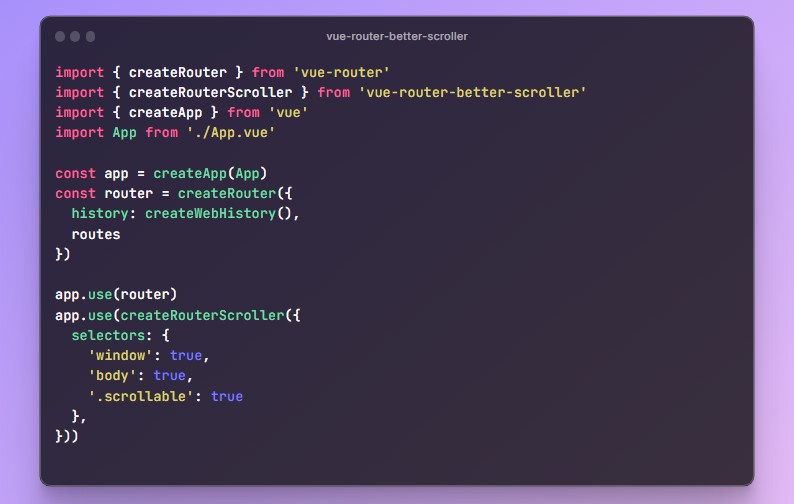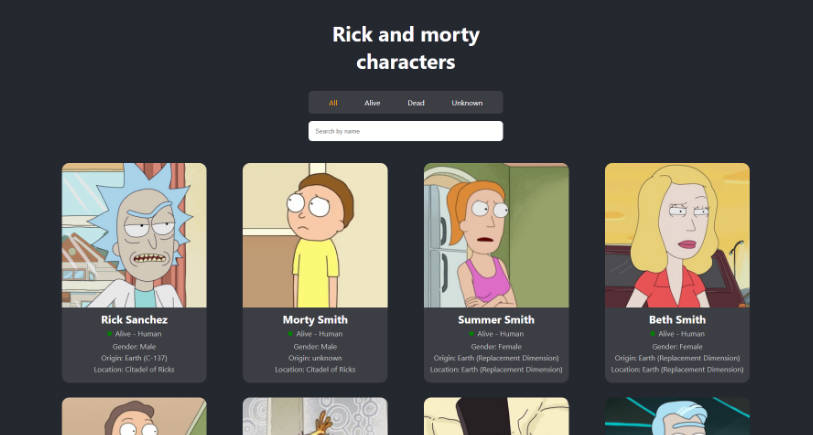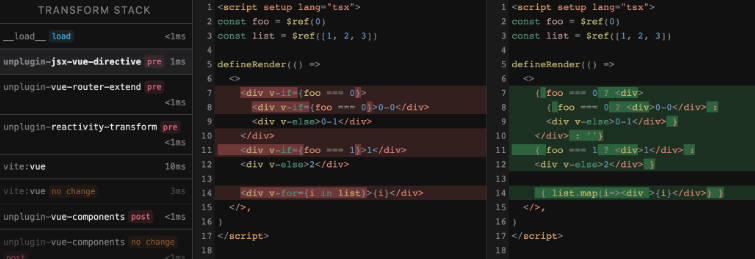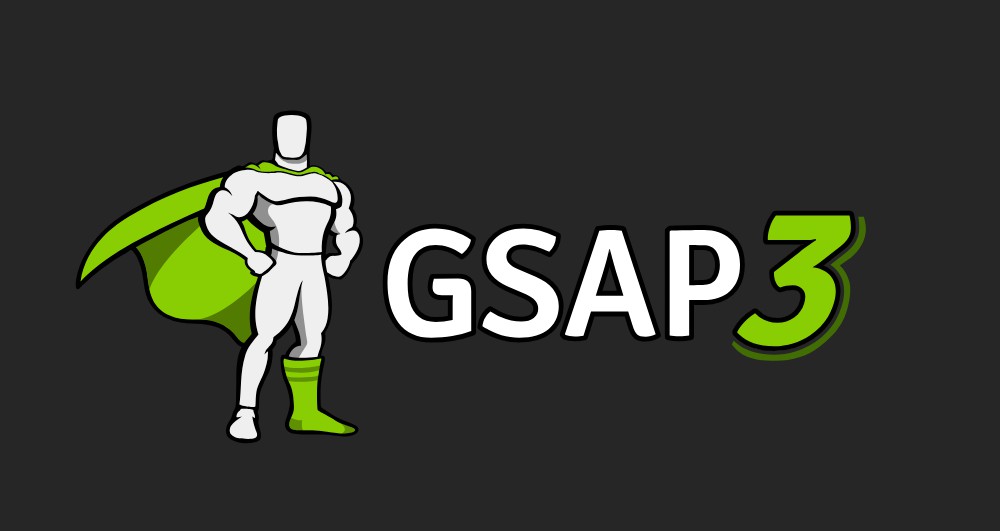Rick and Morty Wiki – IT2810 (Vue)
Description
This project is full-stack web application about Rick and Morty characters.
As a user, you can search and filter characters. As a logged-in user, you can rate a given character. You can also see a leaderboard of all users’ number of ratings, sorted in ascending or descending order.
Screenshots
Splash screen
Characters overview
Filtering characters
Character view
Leaderboard
Important to note
In order to not affect the backend and database from project 3, the group has copied the backend folder from project 3 and created a new database for project 4. The only changes in the backend from project 3 to project 4 include changing the port it runs on and communicating with a new database, in order to not conflict with project 3.
Hence, major changes between project 3 and project 4 is remaking the frontend using Vue.
Live demo
Please use this link to visit a live demo of the website.
Developer Information
Developed by Sebastian Sole, Julian Grande, Victoria Kallerud and Magnus Rødseth.
Documentation
Please read the docs documentation.
Tech stack and libraries
frontend
- Vue
- TypeScript
- Element Plus, a library with UI components
- Tailwind, for easier CSS styling
- VueUse, a library with useful hooks
- VeeValidate, for form validation
- VueRouter, for routing
- Yup Schema Validation
- Apollo GraphQL client
- Pinia global state management
- JSON Web Token, for handling the user session
- Vitest, for unit tests, component tests and snapshot tests
- Cypress, for end-to-end testing
backend
- Express, a web server
- TypeScript
- GraphQL
- JSON Web Token, for handling the user session
- Prisma Client, a client for interacting with the PostgreSQL database
- Rollup, for transpiling and bundling the application to JavaScript
Database
- PostgreSQL, a relational database running locally using
docker-compose
Running the application
Running frontend
# Navigate to the frontend directory
cd frontend
# Install dependencies
npm i
# Start application
npm start
Running backend
# Navigate to the backend directory
cd backend
# Install dependencies
npm i
# Start application in development mode
npm run dev
# or
# Compile and start application in production mode
npm start
Connecting to the database
Ensure you have a .env file located in the backend/.env directory with the following contents:
PORT=9091
DATABASE_URL="postgresql://myuser:mypassword@localhost:5432/mydatabase"
The .env file is not part of the .gitignore, as it is not sensitive information in this project, and other students require access to the database in order to run it locally.
Please see backend/package.json for more information of the available scripts regarding the database.
Testing the application
This part assumes that all dependencies are installed. The end-to-end tests assume that the frontend is running in production mode (PORT=5173), as it attempts to connect to it before running the end-to-end tests.
Testing frontend
# Navigate to the frontend directory
cd frontend
# Run unit tests and component tests
npm run test:unit
# Run E2E tests in browser
npm run test:e2e
# or
# Run E2E tests headless
npm run test:e2e:ci
